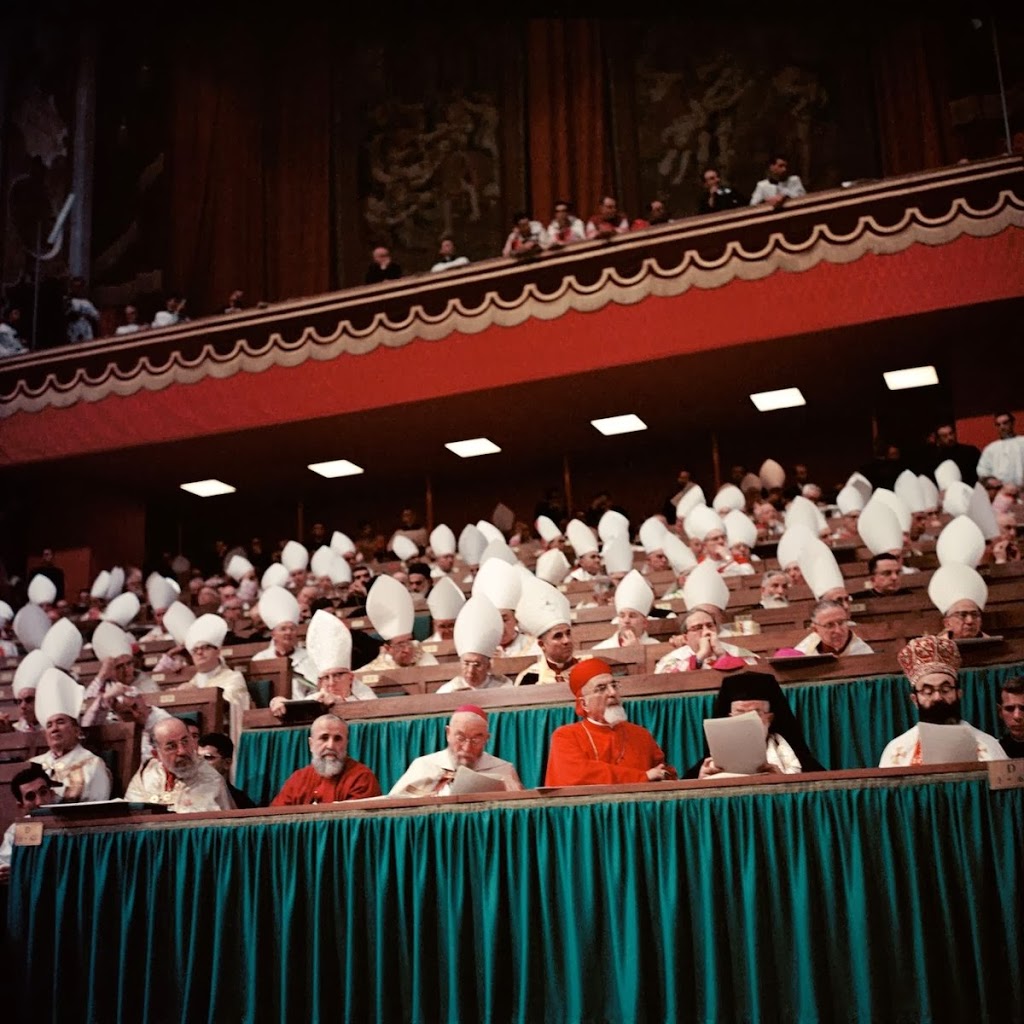After making my case for the sacred character of Latin, many have asked to what extent Latin should make a return. Should the entire liturgy be in Latin? To answer that question, I will not give my personal opinion, but simply state what the Church herself has taught since Vatican II.
[featured-image single_newwindow=”false”]Second Vatican Council, Wikipedia[/featured-image]
As a reminder, Latin is the liturgical language of the “Roman Rite” within the Catholic Church. The Church has four major groupings of Rites: the Roman, the Antiochian (Syria) and the Alexandrian (Egypt) and Byzantine. From these groups have developed 20 liturgical Rites, each with their own liturgical traditions! This means that the liturgical language for each is not necessarily the same. The Church really is quite beautiful in its diversity of rites and I encourage you all to explore them when you have the chance.
For example, the Maronite rite (within the Antiochian family) has “Aramaic” as its liturgical language. It is quite a site to be seen, as the words of institution that the priest uses are in that language, the common language that Jesus would have used on an everyday basis. So when the priest says “this is my Body” in Aramaic, you are able to get a glimpse into the Last Supper. If you are interested in learning about the liturgical language for each rite, check out this list on EWTN. I won’t comment on their particular Rites as I am within the Roman Rite and am only vaguely familiar with their liturgical traditions or language.
When it comes to the Roman Rite, the Church has maintained that Latin should not be abolished. The documents of Vatican II state the following:
Particular law remaining in force, the use of the Latin language is to be preserved in the Latin rites (Sacrosanctum Concilium, §36).
So, Vatican II did not abolish Latin and instead mandated that it be preserved. But to what extent?
The Council Fathers gave this instruction in Sacrosantum Concilium:
But since the use of the mother tongue, whether in the Mass, the administration of the sacraments, or other parts of the liturgy, frequently may be of great advantage to the people, the limits of its employment may be extended. This will apply in the first place to the readings and directives, and to some of the prayers and chants, according to the regulations on this matter to be laid down separately in subsequent chapters (Sacrosanctum Concilium, §36, emphasis added),
In Masses which are celebrated with the people, a suitable place may be allotted to their mother tongue. This is to apply in the first place to the readings and “the common prayer,” but also, as local conditions may warrant, to those parts which pertain to the people…Nevertheless steps should be taken so that the faithful may also be able to say or to sing together in Latin those parts of the Ordinary of the Mass which pertain to them (Sacrosanctum Concilium, §54, emphasis added).
Pope Benedict XVI echoes and expands upon this decree when he stated in his Apostolic Exhortation:
I wish to endorse the proposal made by the Synod of Bishops, in harmony with the directives of the Second Vatican Council, that, with the exception of the readings, the homily and the prayer of the faithful, it is fitting that such liturgies be celebrated in Latin (Sacramentum Caritatis, §62).
In context, Pope Benedict is principally concerned about international gatherings in order to promote unity, yet his words are consonant with the Council Fathers.
Putting all of these ideas together, the suggestion given by Pontiffs and theologians is that the Mass should be celebrated principally in Latin, with the following exceptions in the vernacular (in the Ordinary Form of the Roman Rite):
- Readings (First Reading, [Responsorial Psalm], Second Reading & Gospel)
- Homily
- Prayer of the Faithful (Petitions)
- “Some prayers and chants,” especially those that “pertain to the people”
As one can see that covers a wide area, but it preserves Latin as the primary language for such parts of the Mass as the Eucharistic Prayer. Surprisingly, the Church is very specific in regards to how she sees the implementation of Latin in the liturgy and gives us specific examples.
So strictly speaking, the Latin language has never left the Roman Rite. It has always been there and continues to be used. The Church encourages its use and even mandates its preservation.
Having a liturgical language that is different from the “mother tongue” is something that can unite people of every nation and is one of the main reasons why Latin is used for Papal Masses said in the Vatican. But it also has a way of bringing out the “sacred” character of the Mass. It reminds us that Mass is not something ordinary, but extraordinary; it is not simply a lecture, but something heavenly.
It can also be good for our humility. Latin reminds us that the Mass it not all about us. With God, it is always a two-fold invitation: He has come down to our level, but we must also go up to Him.
So again, I am simply trying to be an obedient son of the Roman Rite and understand the Church’s official teaching and how it applies to us today.
Read the Entire Series
- The Case for Latin: Why Worship Benefits From a Sacred Language
- How to Actively Participate in Mass
- 3 Ways to Imitate Jesus’ Vocal Prayer

